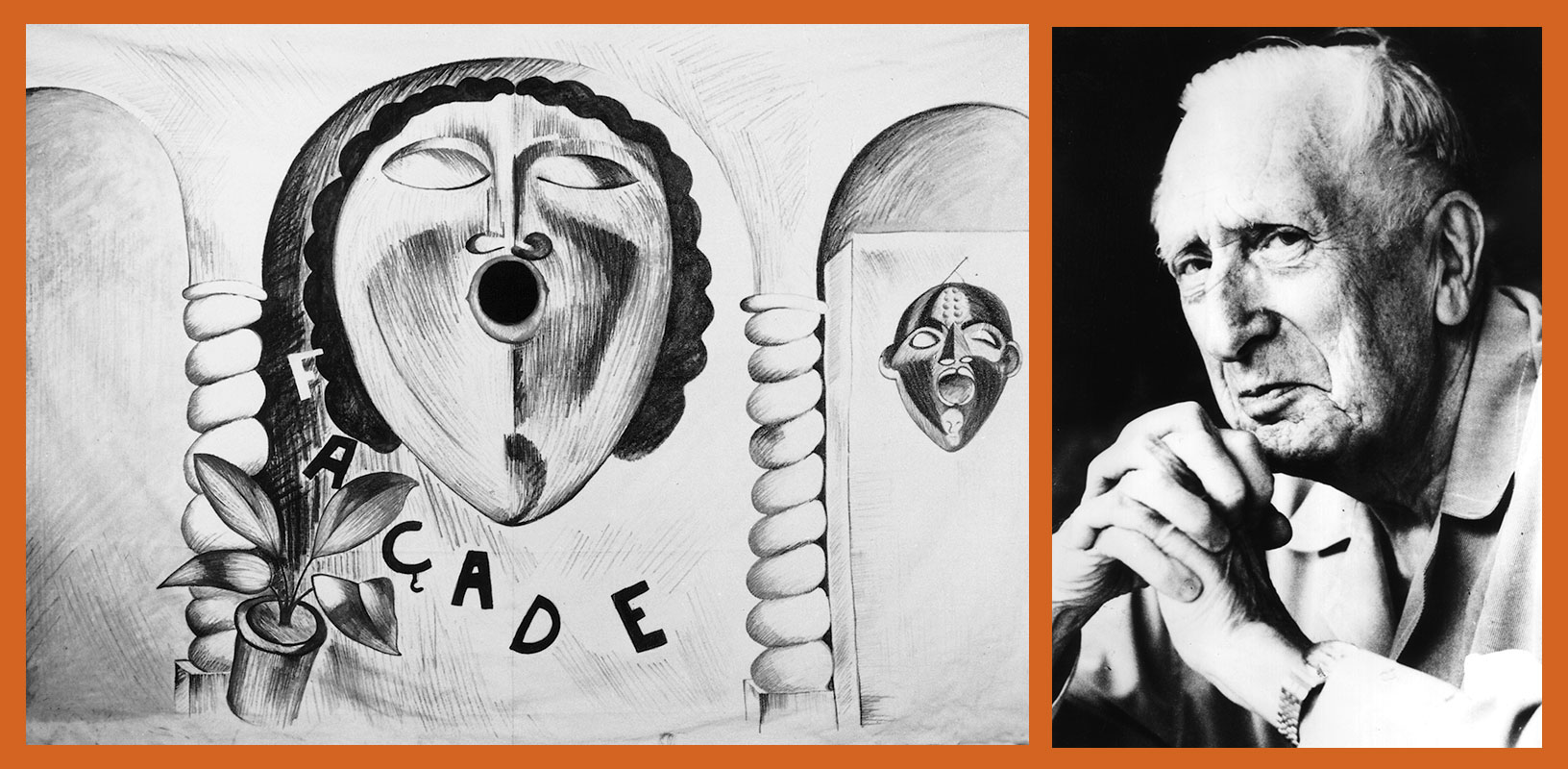William Walton’s Façade celebrates its centenary

2023 is the centenary of the first public performance of William Walton’s witty and ever popular collaboration with poet Edith Sitwell.
Walton’s music published by Oxford University Press is promoted here under license by Boosey & Hawkes.
The first public performance of Façade: An Entertainment at the Aeolian Hall in London on 12 June 1923 was a notable succèss de scandale, with the poet Edith Sitwell reciting her texts through a megaphone embedded in the scenery, William Walton conducting his ensemble of six instrumentalists, and Osbert Sitwell presiding as master of ceremonies. The composer had been ‘discovered’ as a 16-year-old by Sacheverell Sitwell in 1919 while they both studied at Oxford University, and Walton soon became the ‘adopted, or elected brother’ to the Sitwell siblings, living with them in Chelsea and discovering the vibrant artistic atmosphere of post-war London. It was inevitable he would be the composer of the music to accompany the Façade recitations, first heard in a pair of private house performances in 1922.
The experimental nature of the public performance the following year succeeded in attracting news coverage, particularly from the feature and gossip writers, often mocking the whole venture as a publicity stunt. However, the public response was immediately enthusiastic and the music critic of the Daily Mail noted “the extraordinarily stimulative running comment of Mr Walton’s music. His musical invention is as original and witty as Miss Sitwell’s poetry and fits the rhythm of the spoken line as though words and music were cast in one mould. He manages to get a pleasing variety of colour out of the six instruments used.”
Despite Façade’s initial shock value and critical controversy, as Gramophone notes, “its musical and verbal achievements should be more properly measured alongside 1920s contemporaries such as James Joyce’s Ulysses, the first Berlin theatre experiments of Bertolt Brecht and Kurt Weill, and small ensemble works with similar orchestration such as Pierrot lunaire, The Soldier’s Tale and Satie’s Parade.”
> Watch music from Façade with Barbara Hannigan and Simon Rattle on YouTube
> Listen to Façade Suites for Orchestra on Spotify
Façade launched Walton’s career as an enfant terrible and he endeavoured in the 1920s to create for London a parallel excitement to that of Paris as heard through the music of Les Six and Prokofieff. The young composer, still in his early 20s at the premiere, was to return to the Façade score intermittently over the following decades: for further performances, the 1929 recording by Decca, and a broadcast by the BBC. He revised the contents, taking on board advice from Constant Lambert, until it achieved its final form for publication by Oxford University Press in 1951, comprising a fanfare and 21 numbers arranged into seven groups of three poems. This was soon captured on disc with a second Decca recording featuring Edith Sitwell and Peter Pears as narrators, with the English Opera Group Ensemble conducted by Anthony Collins.
Walton created Façade 2: A Further Entertainment for his 75th birthday in 1977, including numbers that had been excluded from the definitive Façade largely for reasons of balance. A further rejigging the following year left Façade 2 with eight numbers, and this was given a notable performance at the 1979 Aldeburgh Festival, again with Peter Pears as reciter. Four additional numbers are also available for performance, collecting the remaining offcuts from the two collections.
Three suites of material from Façade are available for orchestral performance, all without the requirement of a reciter. Suites for Orchestra Nos.1 and 2, with five numbers and six numbers respectively, adopt orchestrations by the composer himself or by Constant Lambert. Suite for Orchestra No.3 is Christopher Palmer’s orchestral arrangement of further items from Façade Entertainment. Walton’s music is also familiar on the dance stage thanks to the selection of seven number from the first two suites – without reciter – made by Constant Lambert for Frederick Ashton’s one act ballet Façade. First staged in 1931, this ballet remains a perennial favourite with audiences.
The William Walton Edition score of Façade Entertainments brought together for the first time all thirty-three extant Walton settings of the Edith Sitwell poems that were written and performed under this title. This version of Façade Entertainments reproduces the music content of the full score and presents it in a practical format. Thanks to the William Walton Edition, the composer’s entire output is now available to scholars and performers in a definitive edition, based on the form in which the composer ultimately wished his music to be performed. The general editor, David Lloyd-Jones - the late conductor, English music specialist, and founder of Opera North - invited a world-class expert to edit each volume. Carefully researched introductory essays place the works in their historical context and in the composer's oeuvre, and there are full critical notes.
A new recording, collecting ‘The Complete Façades’, has recently been released on Naxos, featuring a trio of reciters, the Virginia Arts Festival Chamber Players and conductor JoAnn Falletta (Naxos 8.5734378). Gramophone writes: “Tight and witty, a spot-on choice of tempos closely mirrors the text… Under Falletta, Walton’s ‘with it’ trawling of contemporary 1920s jazz and dance-band influences speaks out as clearly and entertainingly as the parodies of Rossini and patriotic songs.” This new disc sits alongside the classic account by Sitwell with the Kostelanetz Orchestra under Frederik Prausnitz available on Sony Classical (88883 73718-2), Pears and Sitwell with the English Opera Group Ensemble (Decca ELQ4803783), and Andrew Litton’s recording of Suites Nos.1 and 2 on Decca’s Walton Centenary Edition disc in The British Music Collection series (Decca 4705082).
Image: Frank Dobson’s curtain design for the first public performance of Façade.
